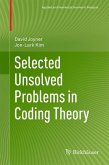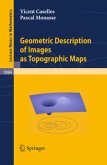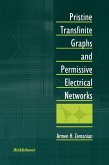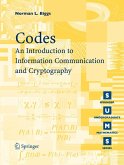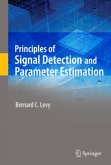This book examines results on transfinite graphs and networks achieved through research over the past several years. These new results, covering the mathematical theory of electrical circuits, are different from those presented in two previously published books by the author, "Transfiniteness for Graphs, Electrical Networks, and Random Walks" and "Pristine Transfinite Graphs and Permissive Electrical Networks".
Two initial chapters present preliminary theory summarizing all essential ideas needed, relieving the reader of any need to consult those prior books. Subsequent chapters are devoted entirely to novel results and cover:
- Connectedness ideas and their relationship to hypergraphs
- Distance ideas and their extension to transfinite graphs with more complications, such as the replacement of natural-number distances by ordinal-number distances
- Nontransitivity of path-based connectedness alleviated by replacing paths with walks, leading to a more powerful theory for transfinite graphs and networks
Scientia Gratiii Scientiae It is now thirteen years since the first book that discusses transfinite graphs and elec trical networks appeared [50]. This was followed by two more books [51] and [54] which compiled results from an ongoing research effort on that subject. Why then is a fourth book, this one, being offered? Simply because still more has been achieved beyond that appearing in those prior books. An exposition of these more recent re sults is the purpose of this book. The idea of transfiniteness for graphs and networks appeared as virgin research territory about seventeen years ago. Notwithstanding the progress that has since been achieved, much more remains to be done-or so it appears. Many conclusions con cerning conventionally infinite graphs and networks can be reformulated as open problems for transfinite graphs and networks. Furthermore, questions peculiar to transfinite concepts for graphs and networks can be suggested. Indeed, these two considerations have inspired the new results displayed herein.
Two initial chapters present preliminary theory summarizing all essential ideas needed, relieving the reader of any need to consult those prior books. Subsequent chapters are devoted entirely to novel results and cover:
- Connectedness ideas and their relationship to hypergraphs
- Distance ideas and their extension to transfinite graphs with more complications, such as the replacement of natural-number distances by ordinal-number distances
- Nontransitivity of path-based connectedness alleviated by replacing paths with walks, leading to a more powerful theory for transfinite graphs and networks
Scientia Gratiii Scientiae It is now thirteen years since the first book that discusses transfinite graphs and elec trical networks appeared [50]. This was followed by two more books [51] and [54] which compiled results from an ongoing research effort on that subject. Why then is a fourth book, this one, being offered? Simply because still more has been achieved beyond that appearing in those prior books. An exposition of these more recent re sults is the purpose of this book. The idea of transfiniteness for graphs and networks appeared as virgin research territory about seventeen years ago. Notwithstanding the progress that has since been achieved, much more remains to be done-or so it appears. Many conclusions con cerning conventionally infinite graphs and networks can be reformulated as open problems for transfinite graphs and networks. Furthermore, questions peculiar to transfinite concepts for graphs and networks can be suggested. Indeed, these two considerations have inspired the new results displayed herein.
"The book presents almost everything that has been achieved so far in the relatively new field of transfinite graphs and electrical networks. In the first two chapters, the reader is familiarized with transfinite graphs and with the symbols and notations used in the book.... The last chapter is dedicated to the approach of nonstandard analysis applied to transfinite graphs. The book must be appreciated especially because new results in the field of transfinite graphs are also included. Therefore, I find this book a welcome addition to the literature." -Zentralblatt MATH
"For about thirty years Zemanian has been developing a theory of infinite electrical networks. This book is the latest in a series of books...on the subject. The subject is necessarily abstract and sophisticated because infinite objects are the main objects of discourse.... The first few chapters are important not only to remind the reader of the terms, but also to give an improved or alternate treatment of some earlier results.... There does not yet seem to be a large following of researchers in this area, but it seems very attractive and ripe for investigation. It's intriguing to see the connections between set theory and electrical network problems.... To understand these concepts fully the reader must consult the book under review. The reviewer highly recommends devoting the effort needed to understand these original and surprising concepts." -SIAM Review
"For about thirty years Zemanian has been developing a theory of infinite electrical networks. This book is the latest in a series of books...on the subject. The subject is necessarily abstract and sophisticated because infinite objects are the main objects of discourse.... The first few chapters are important not only to remind the reader of the terms, but also to give an improved or alternate treatment of some earlier results.... There does not yet seem to be a large following of researchers in this area, but it seems very attractive and ripe for investigation. It's intriguing to see the connections between set theory and electrical network problems.... To understand these concepts fully the reader must consult the book under review. The reviewer highly recommends devoting the effort needed to understand these original and surprising concepts." -SIAM Review


